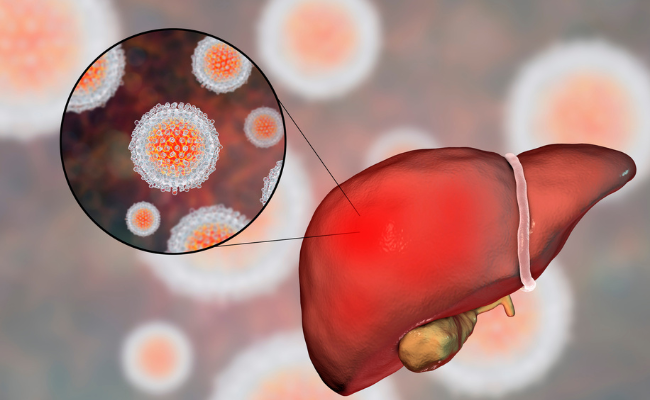How to Treat Hepatitis C?
- January 23, 2024
- No Comments

What is Hepatitis C?
Hepatitis C, caused by the hepatitis C virus (HCV), is a viral infection targeting the liver, often leading to chronic liver disease. This global health concern primarily spreads through contact with infected blood. Characterized by inflammation and swelling, hepatitis C gradually damages liver tissues. Unlike other viral causes, HCV has a propensity to persist in the body for an extended period. Chronic inflammation can lead to severe liver damage, making hepatitis C a leading cause of liver failure and transplantation. Addressing and managing this condition promptly is crucial to prevent irreversible harm to the liver.
Why is Hepatitis C a Concern?
Hepatitis C is a cause for concern due to its ability to establish chronic infection without presenting noticeable symptoms in its early stages. This stealthy nature contributes to delayed diagnosis, allowing the virus to persist for years, leading to increased risk of severe complications. Chronic hepatitis C can result in liver cirrhosis, fibrosis, and hepatocellular carcinoma (liver cancer). The mode of transmission is commonly through exposure to infected blood, with unsafe injection practices, needle sharing among drug users, and inadequate infection control in healthcare settings being major risk factors.
How is Hepatitis C Contracted?
The primary modes of hepatitis C transmission include:
- Injection Drug Use: Sharing needles or other drug paraphernalia among individuals who inject drugs is a significant risk factor for hepatitis C transmission. The blood-to-blood contact during these activities facilitates the spread of the virus.
- Blood Transfusions and Organ Transplants: Before the implementation of widespread screening measures, receiving blood transfusions or organ transplants from infected donors posed a substantial risk of hepatitis C transmission.
- Healthcare-related Exposures: Poor infection control practices in healthcare settings, such as inadequate sterilization of medical equipment, can result in the transmission of hepatitis C.
- Mother-to-Child Transmission: While less common, hepatitis C can be transmitted from an infected mother to her baby during childbirth, particularly if the mother has a high viral load.
- Unprotected Sexual Contact: Although less frequent than other modes of transmission, sexual contact can lead to the spread of hepatitis C, especially among individuals with multiple sexual partners.
Treatment Solutions for Hepatitis C:
- Antiviral Medications: The primary approach to treating hepatitis C involves the use of direct-acting antiviral (DAA) medications. These drugs target specific steps in the HCV life cycle, inhibiting viral replication and promoting the body's natural immune response to clear the infection. Common DAAs include sofosbuvir, ledipasvir, and glecaprevir/pibrentasvir.
- Combination Therapies: Effective treatment often involves a combination of antiviral medications to enhance efficacy and reduce the risk of developing drug-resistant strains. The choice of medication and the duration of treatment depend on factors such as the HCV genotype, the extent of liver damage, and the patient's overall health.
- Regular Monitoring: Patients undergoing hepatitis C treatment are subject to regular monitoring to assess the effectiveness of antiviral therapy and detect any potential side effects. Blood tests, including HCV RNA tests and liver function tests, are commonly performed to gauge the progress of treatment.
- Lifestyle Modifications: Adopting a healthy lifestyle is integral to the comprehensive management of hepatitis C. Lifestyle changes include avoiding alcohol consumption, maintaining a balanced diet, and engaging in regular exercise. These modifications contribute to overall liver health and can enhance the effectiveness of antiviral medications.
Benefits of Treating Hepatitis C:
- Viral Clearance: Successful treatment with antiviral medications leads to the clearance of the hepatitis C virus from the body. This not only prevents further liver damage but also reduces the risk of complications associated with chronic infection.
- Prevention of Liver Cirrhosis: Timely and effective treatment can prevent or slow the progression of liver cirrhosis, a condition characterized by scarring of the liver tissue. Liver cirrhosis is a significant risk factor for liver failure.
- Reduced Risk of Liver Cancer: Hepatitis C infection is a major risk factor for the development of hepatocellular carcinoma (liver cancer). Treatment significantly reduces this risk, especially when initiated in the early stages of the infection.
- Improved Quality of Life: Successful treatment not only preserves liver function but also improves the overall quality of life for individuals with hepatitis C. Relief from symptoms and a reduced risk of complications contribute to a better life experience.
- Prevention of Transmission: Treating hepatitis C not only benefits the infected individual but also contributes to public health by reducing the risk of transmission to others. Achieving sustained viral response minimizes the likelihood of spreading the virus within communities.
Comments (0)